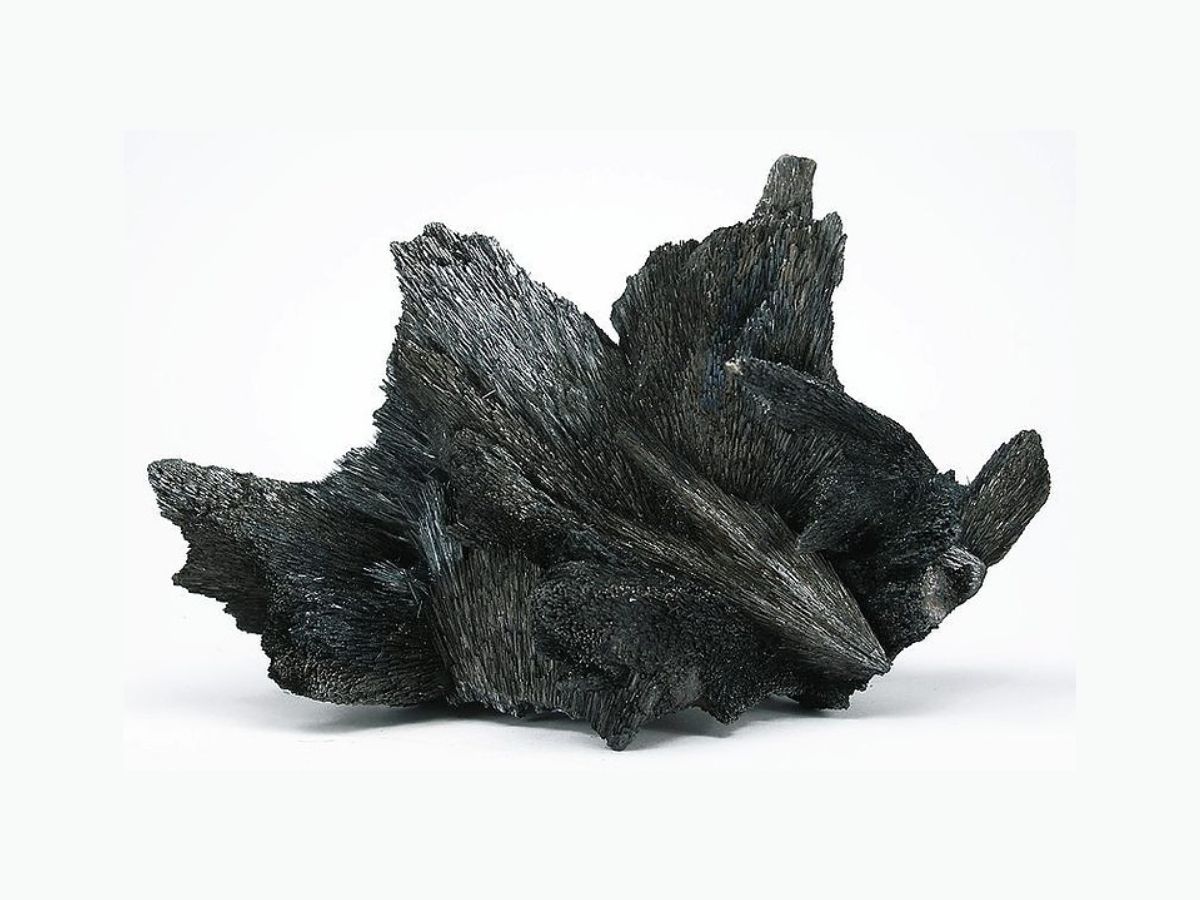
Berthierite is a fascinating mineral that often goes unnoticed. Named after French chemist Pierre Berthier, this mineral has a unique composition and intriguing properties. What makes Berthierite special? It's primarily composed of iron, antimony, and sulfur, giving it a distinctive metallic luster and dark gray to black color. Found in hydrothermal veins, Berthierite often forms in association with other minerals like stibnite and pyrite. Its needle-like crystals can create stunning visual patterns, making it a favorite among mineral collectors. Beyond its beauty, Berthierite has practical applications in various industries, particularly in metallurgy. Curious to learn more? Let's dive into 40 captivating facts about this remarkable mineral!
Key Takeaways:
- Berthierite is a unique mineral with needle-like crystals, a metallic luster, and a rich history. It's found in hydrothermal veins and has limited industrial use due to its rarity and potential toxicity.
- Collectors treasure Berthierite for its beauty and rarity, but it should be handled with care and stored in a dry environment. Its formation and properties continue to intrigue scientists and researchers.
What is Berthierite?
Berthierite is a fascinating mineral with a rich history and unique properties. Named after the French chemist Pierre Berthier, this mineral has intrigued scientists and collectors alike. Let's dive into some intriguing facts about Berthierite.
Physical Properties of Berthierite
Understanding the physical characteristics of Berthierite helps in identifying and appreciating this mineral.
- Berthierite is a sulfosalt mineral composed primarily of iron, antimony, and sulfur.
- It typically forms in fibrous or acicular crystals, which means the crystals are needle-like or hair-like in appearance.
- The color of Berthierite ranges from steel-gray to black, giving it a metallic luster.
- It has a Mohs hardness of 2 to 3, making it relatively soft compared to other minerals.
- Berthierite has a specific gravity of about 4.6, indicating it is denser than many common minerals.
- The streak of Berthierite is grayish-black, which is the color of the powder left when it is scratched on a porcelain plate.
Formation and Occurrence
Berthierite forms under specific geological conditions, often associated with other minerals.
- Berthierite is commonly found in hydrothermal veins, which are fractures in rocks filled with mineral-rich hot water.
- It often occurs alongside other sulfosalt minerals, such as stibnite and jamesonite.
- Significant deposits of Berthierite have been found in countries like France, Germany, and Japan.
- It can also be found in association with quartz and calcite, which are common gangue minerals.
- Berthierite is typically formed at moderate temperatures, usually between 100°C and 300°C.
Uses and Applications
While not widely known, Berthierite has some interesting applications and uses.
- Berthierite is primarily of interest to mineral collectors due to its unique crystal structure and appearance.
- It has limited industrial use, mainly because of its rarity and the presence of antimony, which can be toxic.
- In some cases, Berthierite is studied for its potential use in antimony extraction, although this is not common.
- Researchers study Berthierite to understand the formation of sulfosalt minerals, which can provide insights into geological processes.
Historical and Cultural Significance
Berthierite has a rich history and cultural significance, especially in the regions where it is found.
- The mineral was first described in 1827 by the French mineralogist François Sulpice Beudant.
- It was named in honor of Pierre Berthier, a renowned French chemist and mineralogist.
- Berthierite has been used in traditional medicine in some cultures, although this practice is not scientifically supported.
- In mineral exhibitions, Berthierite specimens are highly prized for their aesthetic appeal and rarity.
- Some local folklore in mining regions associates Berthierite with good luck, especially among miners.
Interesting Facts About Berthierite
Here are some lesser-known but fascinating facts about Berthierite.
- Berthierite can exhibit twinning, where two crystals grow together in a symmetrical manner.
- It is often mistaken for other minerals, such as stibnite, due to its similar appearance.
- Under polarized light, Berthierite can show pleochroism, meaning it appears to change color when viewed from different angles.
- The mineral can be slightly magnetic, which is unusual for sulfosalt minerals.
- Berthierite can decompose in strong acids, releasing hydrogen sulfide gas, which has a characteristic rotten egg smell.
- It is not fluorescent, meaning it does not glow under ultraviolet light.
- Berthierite can be found in both massive and granular forms, in addition to its more common fibrous form.
- The mineral's crystal structure is orthorhombic, which means it has three axes of different lengths that are all perpendicular to each other.
- Berthierite has a relatively low melting point, around 550°C, compared to many other minerals.
- It can be synthesized in a laboratory, which helps researchers study its properties in detail.
Collecting and Preserving Berthierite
For mineral collectors, preserving the beauty and integrity of Berthierite specimens is crucial.
- Berthierite specimens should be handled with care, as they are relatively soft and can be easily damaged.
- Storing Berthierite in a dry environment is important, as moisture can cause it to tarnish or corrode.
- Using a soft brush to clean Berthierite is recommended, to avoid scratching its surface.
- Displaying Berthierite under proper lighting can enhance its metallic luster, making it more visually appealing.
- Labeling Berthierite specimens with their origin and date of collection adds value, especially for serious collectors.
Scientific Studies and Research
Berthierite continues to be a subject of scientific interest and research.
- Geologists study Berthierite to understand the conditions of hydrothermal vein formation.
- Chemists analyze Berthierite to explore its potential uses in antimony extraction.
- Mineralogists examine Berthierite's crystal structure to learn more about sulfosalt minerals.
- Environmental scientists investigate the impact of mining Berthierite on local ecosystems.
- Berthierite is used in educational settings, helping students learn about mineralogy and geology.
Final Glimpse at Berthierite
Berthierite, a fascinating mineral, holds a unique place in the world of geology. Its distinctive needle-like crystals and metallic luster make it a standout among minerals. Found primarily in hydrothermal veins, this mineral often associates with other sulfides, adding to its geological intrigue.
Collectors and geologists alike value Berthierite for its aesthetic appeal and scientific significance. Its composition of iron, antimony, and sulfur provides insights into the Earth's mineralogical processes. While not as well-known as some other minerals, Berthierite's rarity and beauty make it a prized find.
Understanding Berthierite enriches our appreciation of the Earth's diverse mineral kingdom. Whether you're a seasoned collector or a curious newcomer, this mineral offers a glimpse into the intricate and beautiful world beneath our feet. Keep exploring, and who knows what other hidden gems you'll uncover!
Frequently Asked Questions
Was this page helpful?
Our commitment to delivering trustworthy and engaging content is at the heart of what we do. Each fact on our site is contributed by real users like you, bringing a wealth of diverse insights and information. To ensure the highest standards of accuracy and reliability, our dedicated editors meticulously review each submission. This process guarantees that the facts we share are not only fascinating but also credible. Trust in our commitment to quality and authenticity as you explore and learn with us.


